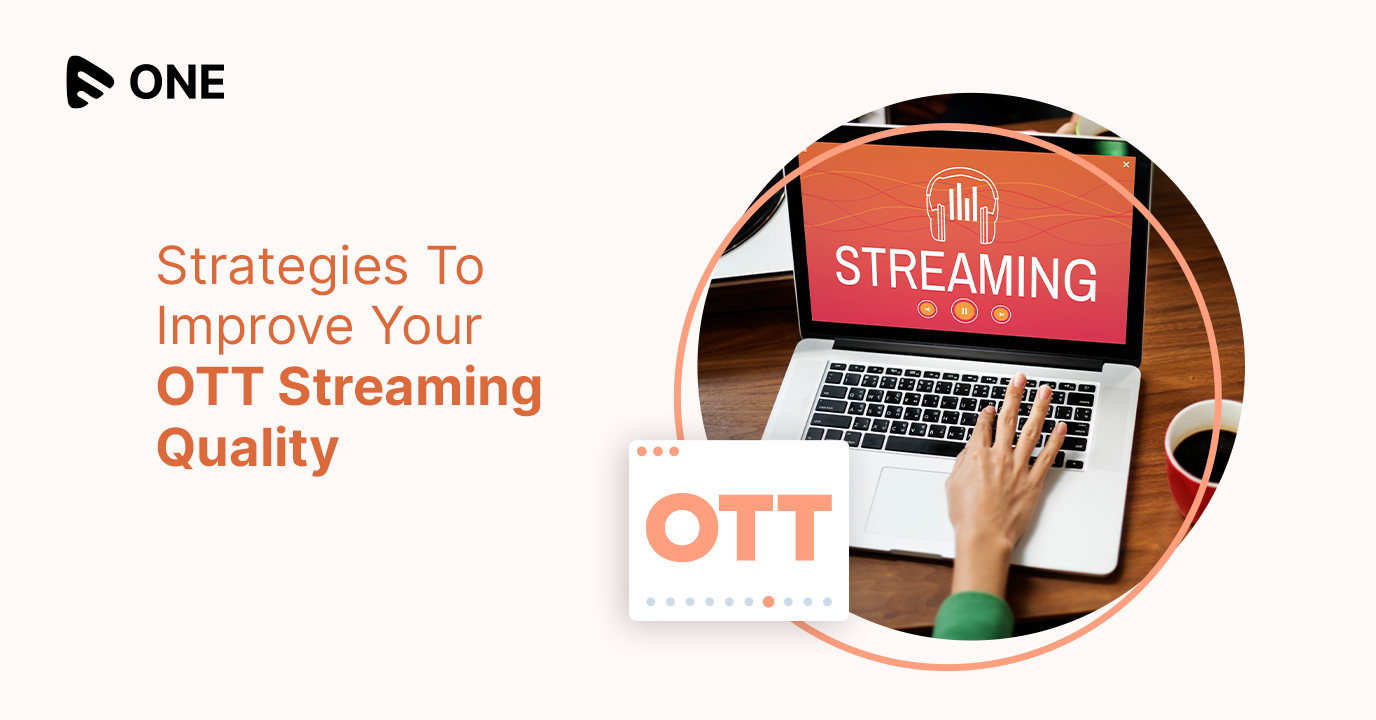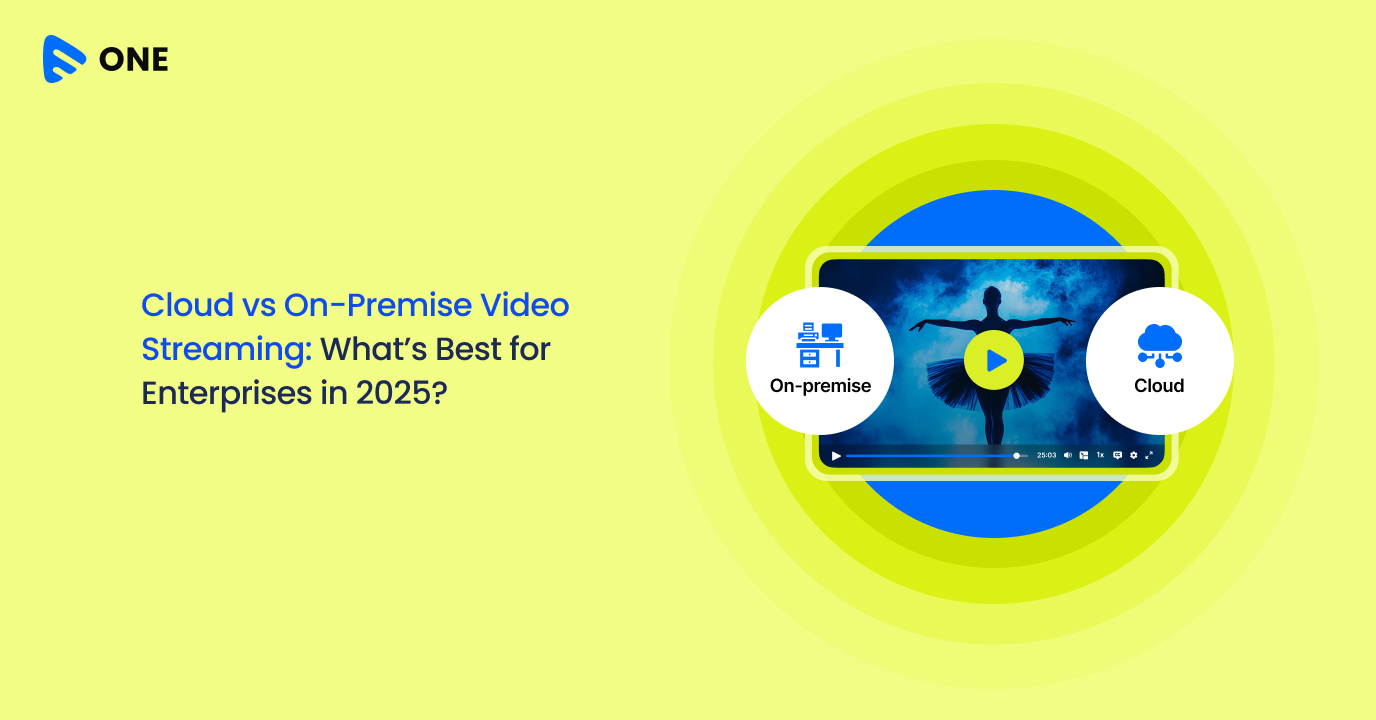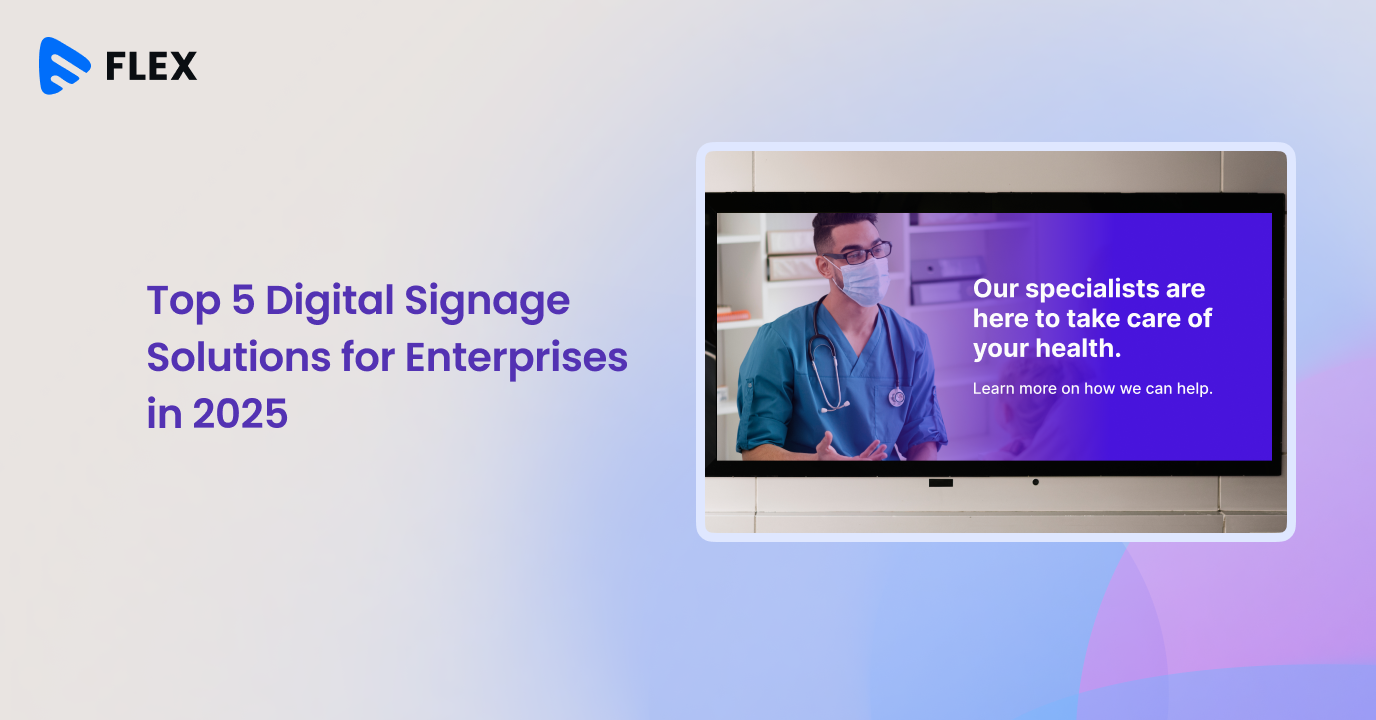In today’s hyper-connected world, where viewers hold the remote control to their entertainment, the quality of OTT streaming has become paramount. It’s no longer just about content; it’s about the quality of the experience.
For OTT streaming businesses, ensuring top-tier streaming quality is the cornerstone of attracting, retaining, and delighting audiences. This blog explores the indispensable strategies and insights that not only meet but exceed viewer expectations in the realm of OTT streaming.
In an era where viewers are discerning and demanding, staying ahead in the competition requires a relentless commitment to streaming excellence. Let’s delve deeper to know how to nail it like a pro!
How To Improve Your OTT Streaming Quality? Top Strategies
As OTT businesses strive to captivate and retain viewers, the quality of content delivery becomes a defining factor. Let’s explore the top strategies that can significantly impact the quality of OTT video streaming.
1. Content Optimization
Content optimization is often the key to improve your OTT streaming quality. Here’s how to do it right.
Video Encoding Efficiency:
- Implement modern video codecs like H.265 to maintain high video quality while reducing file sizes.
- Employ adaptive bitrate streaming to ensure that viewers receive the best quality their internet connection can support.
Audio Quality Enhancement:
- Use advanced audio codecs such as AAC-LC or Opus to optimize audio quality while conserving bandwidth.
- Ensure audio synchronization with video for a seamless viewing experience.
Resolution Selection:
- Offer content in various resolutions, including 4K and HDR, to cater to viewers with different devices and display capabilities.
- Implement efficient scaling algorithms to adapt content to viewers’ screens without quality loss.
Frame Rate Consistency:
- Maintain consistent frame rates throughout the video to prevent jarring viewing experiences caused by frame drops or stutters.
- Ensure that frame rate matches the source content for an authentic viewing experience.
Effective Transcoding:
- Use cloud-based or on-premises transcoding solutions to deliver content in various formats suitable for different viewer devices and network conditions.
- Optimize transcoding settings to balance quality and bandwidth efficiency.
2. Robust CDN Integration
Here are the main pillars of ensuring a robust CDN for better OTT streaming quality –
Choosing the Right CDN:
- Select a content delivery network with a global presence and strategically located edge servers to ensure rapid content delivery to viewers worldwide.
- Evaluate CDN performance, reliability, and scalability to meet the demands of peak traffic periods.
Caching Mechanisms:
- Implement content caching mechanisms to store and serve frequently accessed content closer to end-users, reducing latency and server load.
- Utilize caching strategies such as time-based caching, content-based caching, and adaptive caching.
Load Balancing:
- Integrate load balancing mechanisms to distribute viewer traffic evenly across multiple servers, preventing overloads and ensuring smooth content delivery.
- Employ dynamic load balancing algorithms to adapt to changing traffic patterns.
Content Prefetching:
- Implement predictive content pre-fetching strategies that anticipate viewer actions and preload content, reducing latency during streaming.
- Utilize machine learning and predictive analytics to optimize prefetching algorithms.
Geographic Redundancy:
- Establish geographic redundancy by replicating content and infrastructure across multiple data centers or regions to minimize service disruptions.
- Utilize failover mechanisms to redirect traffic to redundant locations in case of outages.
Security and DDoS Protection:
- Prioritize security by integrating features such as Distributed Denial of Service protection and content encryption within the CDN.
- Regularly update and patch CDN infrastructure to safeguard against security vulnerabilities.
3. ABR Implementation
Adaptive Bitrate Streaming is a fundamental technology that plays a crucial role in delivering high-quality OTT video streaming. ABR dynamically adjusts the video quality based on the viewer’s internet connection speed and device capabilities, ensuring a seamless and buffer-free experience.
Multi-Bitrate Encoding:
- Offer your video content in multiple bitrates and resolutions, allowing viewers to choose the quality that suits their internet connection.
- Ensure that each bitrate level is properly encoded to maintain optimal visual quality.
Dynamic Manifests:
- Utilize dynamic manifest files, such as MPEG-DASH or HLS, that adaptively select the appropriate stream based on viewer conditions.
- These manifest files help the player choose the best possible quality in real-time to match the viewer’s available bandwidth and device capabilities.
Quality of Service or, QoS Monitoring:
- Continuously monitor key QoS metrics such as buffering rates, startup times, and video quality.
- Implement automated systems that can detect and address performance issues in real-time by adjusting the streaming quality.
Content Chunks and Segmentation:
- Divide your video content into smaller chunks or segments to enable smoother bitrate switching during playback.
- Implement short segment durations e.g., 2-10 seconds, to enhance the viewer’s ability to switch to a different quality level quickly.
Adaptive Player Logic:
- Use adaptive players that can seamlessly switch between different bitrate streams without interrupting playback.
- Implement player logic that takes into account network conditions and viewer preferences.

4. Proper Scalability Planning
Scalability is a critical aspect of OTT video streaming, especially when dealing with traffic spikes or growing viewer bases. Proper scalability planning ensures that your streaming service can handle increased demand without compromising on quality or availability:
Cloud-Based Scalability:
- Utilize cloud-based infrastructure to dynamically scale resources up or down based on traffic fluctuations.
- Cloud platforms like AWS, Azure, or Google Cloud offer auto-scaling features that can automatically adjust server capacity.
Load Balancing:
- Implement load balancing mechanisms that distribute viewer traffic evenly across multiple servers or data centers.
- Load balancers help prevent bottlenecks and ensure that each viewer receives content efficiently.
Geographic Redundancy:
- Establish geographic redundancy by replicating your content and infrastructure across multiple data centers or regions.
- This redundancy minimizes the risk of service disruptions due to localized outages or server failures.
Content Delivery Architecture:
- Design your content delivery architecture with redundancy and failover capabilities to maintain service even in the event of server failures.
- Use geo-routing to direct viewers to the nearest available server for improved performance.
Scalability Testing:
- Conduct rigorous scalability testing under various load scenarios to identify bottlenecks and limitations in your infrastructure.
- Test the system’s ability to handle peak traffic, such as during live events or content releases.
5. Focusing on Viewer Engagement
Engaging viewers is not just about the quality of content but also about creating an interactive and immersive streaming experience. Viewer engagement can lead to increased viewer satisfaction, longer watch times, and improved brand loyalty.
Personalized Recommendations:
- Implement recommendation algorithms that analyze viewer behavior and preferences to suggest relevant content.
- Display personalized content recommendations on the homepage and in-app interfaces to encourage exploration.
User Profiles:
- Allow viewers to create user profiles with customization options, viewing history, and watchlists.
- Personalized user profiles enhance the overall streaming experience.
Interactive Features:
- Incorporate interactive elements such as polls, quizzes, and trivia into your content to engage viewers.
- Interactive features encourage viewer participation and can be especially effective during live events.
Multi-Screen Experiences:
- Enable multi-screen experiences that allow viewers to engage with additional content or information related to what they’re watching.
- Provide synchronized content experiences across different devices for a seamless transition.
Social Integration:
- Integrate social media sharing and commenting options to encourage viewers to share their thoughts and experiences.
- Foster a sense of community by allowing viewers to interact with each other and content creators.
Analytics for Engagement:
- Utilize analytics tools to track viewer engagement metrics, such as click-through rates, social sharing, and interactive feature usage.
- Analyze viewer engagement data to refine your content and engagement strategies continually.
6. Quality Monitoring
Quality monitoring is an indispensable aspect of OTT video streaming services. Ensuring a seamless and high-quality viewer experience is a top priority for OTT businesses.
Quality monitoring encompasses a range of activities and tools designed to track, assess, and enhance the delivery of video content to viewers.
QoS Metrics: Quality of Service metrics include measures like buffering rates, startup times, and video quality. Real-time monitoring of these metrics helps identify issues and bottlenecks in content delivery.
Video Bitrate Control: OTT services employ adaptive bitrate streaming to adjust video quality based on viewers’ internet connections. Quality monitoring ensures that ABR works seamlessly, providing the best possible quality for each viewer.
Content Delivery Audits: Regular audits of the content delivery infrastructure, including content caching, CDNs, and server performance, help identify areas for optimization and improvement.
Viewer Analytics: Viewer behavior analytics provide insights into how viewers interact with content, helping services make data-driven decisions about content selection, recommendations, and engagement strategies.
Real-time Alerts: Automated alerting systems notify OTT operators of quality issues in real-time, enabling rapid responses to address problems and maintain a high-quality streaming experience.
Viewer Feedback: Actively seeking and analyzing viewer feedback, such as ratings and reviews, can provide valuable insights into the perceived quality of the service and content.
Prioritizing OTT Streaming Quality for Competitive Advantages
As viewers become increasingly discerning, OTT services must prioritize the optimization of streaming quality to remain competitive and successful.
Optimizing OTT streaming quality is not merely an option; it is a necessity. It directly impacts viewer satisfaction, retention, and loyalty. Services that consistently deliver high-quality content enjoy a significant competitive advantage in a crowded market.
When it comes to achieving these goals, Muvi One, a leading OTT platform provider, is at the forefront. Muvi One not only helps OTT businesses optimize streaming quality but also offers a comprehensive suite of competitive features. These include:
- SEO and Audience Engagement Tools: Muvi One empowers OTT services with SEO tools to improve discoverability and audience engagement features such as interactive elements, personalized recommendations, and social integration.
- Multi-DRM Security: Security is paramount in the world of streaming. Muvi One provides robust multi-DRM solutions to protect content and ensure compliance.
- Analytics & Insights: Informed decision-making is crucial. Muvi One offers advanced analytics and insights to track viewer behavior, content performance, and quality metrics.
- Adaptive Bitrate Streaming: ABR ensures viewers receive the best possible quality based on their internet connection speed, enhancing the overall streaming experience.
And many more!
Take a 14-day free trial now to get started!


















Add your comment